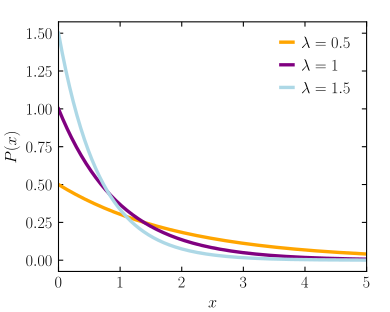
Back توزيع بولتزمان Arabic Distribució de Boltzmann Catalan Boltzmannovo rozdělení Czech Boltzmann-fordelingen Danish Boltzmann-Statistik German Distribución de Boltzmann Spanish توزیع بولتسمان Persian Boltzmannin jakauma Finnish Distribution de Boltzmann French התפלגות בולצמן HE


In statistical mechanics and mathematics, a Boltzmann distribution (also called Gibbs distribution[1]) is a probability distribution or probability measure that gives the probability that a system will be in a certain state as a function of that state's energy and the temperature of the system. The distribution is expressed in the form:
where pi is the probability of the system being in state i, exp is the exponential function, εi is the energy of that state, and a constant kT of the distribution is the product of the Boltzmann constant k and thermodynamic temperature T. The symbol denotes proportionality (see § The distribution for the proportionality constant).
The term system here has a wide meaning; it can range from a collection of 'sufficient number' of atoms or a single atom[1] to a macroscopic system such as a natural gas storage tank. Therefore, the Boltzmann distribution can be used to solve a wide variety of problems. The distribution shows that states with lower energy will always have a higher probability of being occupied.
The ratio of probabilities of two states is known as the Boltzmann factor and characteristically only depends on the states' energy difference:
The Boltzmann distribution is named after Ludwig Boltzmann who first formulated it in 1868 during his studies of the statistical mechanics of gases in thermal equilibrium.[2] Boltzmann's statistical work is borne out in his paper “On the Relationship between the Second Fundamental Theorem of the Mechanical Theory of Heat and Probability Calculations Regarding the Conditions for Thermal Equilibrium"[3] The distribution was later investigated extensively, in its modern generic form, by Josiah Willard Gibbs in 1902.[4]
The Boltzmann distribution should not be confused with the Maxwell–Boltzmann distribution or Maxwell-Boltzmann statistics. The Boltzmann distribution gives the probability that a system will be in a certain state as a function of that state's energy,[5] while the Maxwell-Boltzmann distributions give the probabilities of particle speeds or energies in ideal gases. The distribution of energies in a one-dimensional gas however, does follow the Boltzmann distribution.
- ^ a b Landau, Lev Davidovich & Lifshitz, Evgeny Mikhailovich (1980) [1976]. Statistical Physics. Course of Theoretical Physics. Vol. 5 (3 ed.). Oxford: Pergamon Press. ISBN 0-7506-3372-7. Translated by J.B. Sykes and M.J. Kearsley. See section 28
- ^ Boltzmann, Ludwig (1868). "Studien über das Gleichgewicht der lebendigen Kraft zwischen bewegten materiellen Punkten" [Studies on the balance of living force between moving material points]. Wiener Berichte. 58: 517–560.
- ^ "Archived copy" (PDF). Archived from the original (PDF) on 2021-03-05. Retrieved 2017-05-11.
{{cite web}}: CS1 maint: archived copy as title (link) - ^ Gibbs, Josiah Willard (1902). Elementary Principles in Statistical Mechanics. New York: Charles Scribner's Sons.
- ^ Atkins, P. W. (2010) Quanta, W. H. Freeman and Company, New York



